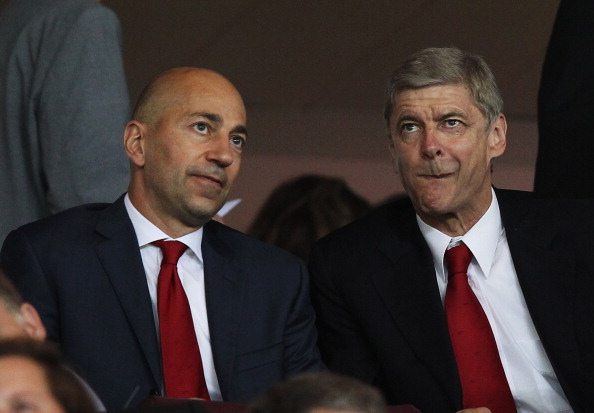Despite being one the best run clubs in the country for the majority of the last century, under the watch of Ivan Gazidis, Arsenal seriously dropped the ball at exactly the wrong time.
The rules
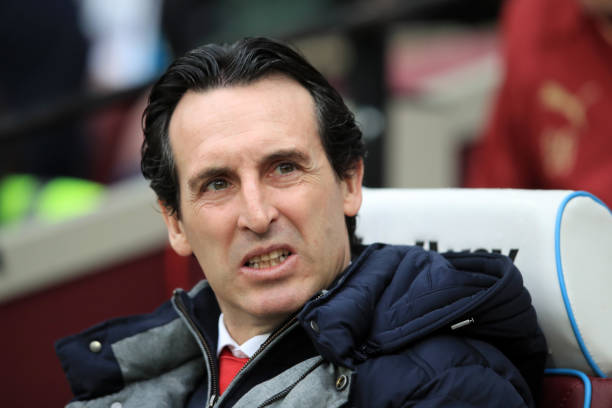
Having written at length about the state of the Arsenal first team squad and the commensurate need for investment, I’ve seen and heard a lot of comment about how the Liverpool game and the rush for fourth may encourage Stan Kroenke to spend some of the Wall-Mart billions.
Unfortunately, I’m here to give everyone a reality check. And not just the obvious one about Silent Stan’s reluctance to spend. The fact is, even if KSE wanted to go full Abramovich or Sheikh Mansour, it simply isn’t possible, due to regulations that govern football clubs in the Premier League.
Apologies to readers who know this, but most Arsenal fans, and indeed football fans as a whole, don’t.
You see, while Uefa’s FFP has shown itself as toothless and corruptible as you’d expect given the nature of that governing body, the Premier League’s version, Short Term Cost Controls (STCC), has shown itself to have a little more teeth, although typically in ways that benefit some parties more than others.
Perhaps intended to work in tandem with UEFA’s model that deals with overall spending vs income, the EPL version is rather more specific. The Premier League recognised that it was wage inflation rather than transfer fee inflation that was posing the greater risk to the stability of football clubs – just ask Leeds United, Q.P.R and Sunderland fans. The recently implemented regulations (which into effect in 2016/17) seek to stop these spiralling out of control, particularly against the backdrop of TV money accelerating the increase in player wages. These regulations were also influenced by the consistent proof that at all but the obscene levels of transfer expenditure, it is the amounts of money spent on wages rather than on initial signings that has the greater correlation with league position.
Accordingly, rules were introduced to put a cap on increases in wage expenditure, in a manner that attempted to be fair across the board.
This was laid out in a number of ways:
- STCC rules only apply to clubs with an annual wage bill of more than £67m (including salaries, bonuses and image rights).
- Using the previous year’s wage bill as a baseline (unless the club wishes to use 2012/13 season – which almost none do given how much wages have increased), these clubs cannot raise wages by more than £7m per annum (or a set figure if using the 2012/13 baseline that stood at £19m in 2016).
- These rules are directly related to centralised TV revenue distribution. So, if a club demonstrates its wage increases are financed by its ‘own revenue’, they can add to this £7m a year limit.
- ‘Own revenue’ includes player sales, commercial/sponsorship deals, match day income and UEFA & domestic prize distributions.
At a first glance, this all seems eminently sensible. If you are well managed, you should do better on the pitch, and as a result, generate more commercial revenue, match day income and prize money. Being well managed off the pitch should increase player sales revenue and other commercial income. As such, it is a very sensible model.
The problem is, these rules were introduced after the horse bolted in terms of encouraging a level playing field and preventing the abuse of the league’s competitive structure by vast owner financial input, thus inflating wage figures. By finally realising that the ‘greed is good’ mantra has its dangers even with the billions pumping into top-flight English football, the Premier League has cemented the new hierarchy formed by the uber-spenders of recent years.
The winners
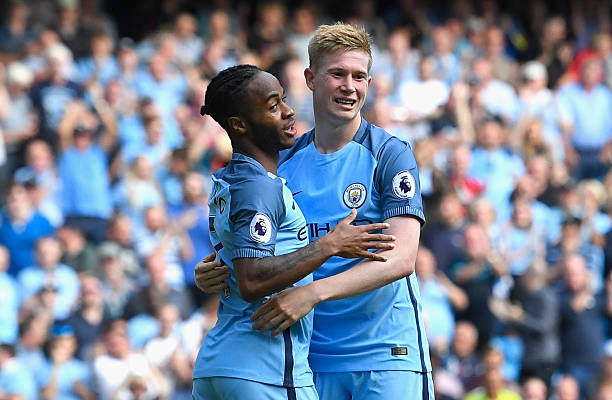
Man City and Chelsea have already spent their (literal) billions, and thus already have existing wage budgets that comfortably exceed true financial self-sufficiency. Man Utd are a commercial behemoth, and Liverpool have spent their owner investment cleverly within the rules.
Man City have doubly circumnavigated this with their entirely dishonest and fraudulently inflated sponsorship deals (quite how members of the same human-rights abusing regime heading royal family aren’t related persons only UEFA and the FA know – common knowledge long before the Der Spiegle expose in November), which ensure their commercial keeps growing, which allows their wage budget to keep growing despite already vastly exceeding their rivals.
This, combined with nearly 90% owner investment for all their spending over the last decade, has allowed the club a complete transformation just in time to beat FFP & STCC. And of course, the club’s reputation and brand has equally been transformed, so that external commercial revenue is now catching up with their initial sponsorship. Indeed, the only way their sponsorship deal with Etihad is remotely justifiable now is the direct result of the spending facilitated by previous sponsorship deals that didn’t remotely reflect the club’s honest market value at the time. A billion pounds net spend on players in a decade does shift the goalposts somewhat (that’s about three times Arsenal’s net spend since the club was formed in 1886).
Man City are a good historical club with a great fan base, but while their initial spending splurge under prior Thai owners seemed fair reward for the long-suffering supporters, what has happened in the last seven to eight years has been unprecedented, and has skewed the Premier League playing field more than anyone could have anticipated. City have already been fined by UEFA for breaching FFP, and a second investigation was opened, a Champions League ban isSued and overturned. $$$.
Ironically, Chelsea‘s unique quality of being largely unloveable despite their incredible success over the last decade or so has prevented their commercial revenues from growing as much as one might expect, and Abramovich has started proving understandably reluctant to sink too much more of his personal fortune into a country reluctant to have him here. That said this is still after almost £1bn cold hard cash has been spent on the club by him, ensuring their position at the EPL top table, even with current restrictions.
Plus, they’re off on another spending spree this summer.
The other main beneficiaries, as always, are Manchester United.
Their already vast wage bill can keep growing due to their incredible commercial growth over the last 20 years. Despite the team being utterly turgid for much of the last five years, one legacy of Ferguson’s era has been to immortalise an already romantic quality to the ‘brand’ which transcends on-field performance. This vast commercial clout has allowed them to keep spending gargantuan amounts on transfers and wages (second only to Man City’s incomprehensible sums), and as such gives their next manager a lot of scope going forwards.
However, as the biggest club in England, and one of the biggest in the world, it makes perfect sense that they should be in a strong position. The level to which this is the case is extraordinary – as @SwissRamble points out, over the last decade they’ve earned almost twice what Arsenal- the next most successful – have from business operations – £1.3bn.
Things are more ambiguous with regards to Liverpool. While not remotely in the same league as Chelsea or Man City, their big transfer fees recouped for Luis Suarez and Coutinho have distracted attention from the fact that they have had a surprising amount of owner investment in the club, at almost 40% of their revenue in recent years. Where they have been clever, and thus don’t fall foul of STCC, is in spending that money on transfers rather than wages, and showing a willingness to jettison ageing players with big contracts sooner rather than later. They have acted strategically, but have done so in a way that illustrates the holes in the current regulations.
What about Arsenal?
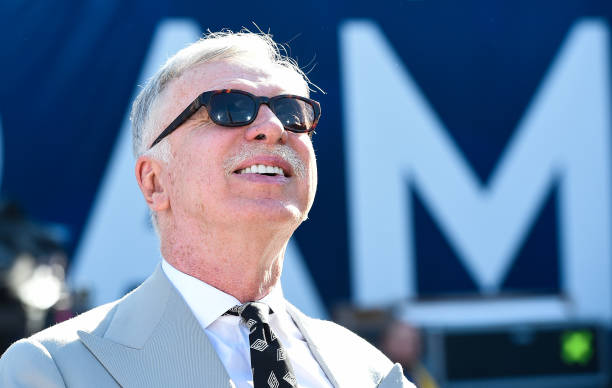
Although disadvantaged compared to those who’ve already had vast owner investment, Arsenal, with their high wage bill, match day revenue and established status, should be in a decent position to thrive under this model, particularly compared to the noisy neighbours.
Unfortunately, however, despite being one the best run clubs in the country for the majority of the last century, under the watch of Ivan Gazidis Arsenal have, in a strategic sense, seriously dropped the ball at exactly the wrong time.
Long-term readers will probably know of my anger towards the majority of the pre-Kroenke board (bar Diamond Danny and a couple of others) for their failure to invest any of their own money into the club when we were one of the best teams in Europe and had Arsene at the absolute peak of his powers but were hamstrung by the stadium build. They didn’t give the manager funds when he was still spotting world beaters before his contemporaries, and still had the reputation to attract them.
Instead, we watched them all go to rivals while our best players were about to start declining. Our policy became penny wise and pound foolish, with refusing to pay £11m for Ronaldo being a prime example. Despite this, all were happy to sell their shares to Kroenke or Usmanov, pocketing extraordinary wealth and profits – in some cases having contributed very little.
Since then, however, things have got a lot worse in terms of how the club is run.
The arrival of more cash-rich rivals applied a new level of pressure on Arsenal, particularly when augmented by both Spurs and Liverpool getting their acts together in a way not seen since the 1980s. The club, understandably chasing the Champions League Euros, panicked, and started trying to spasmodically throw money at the problem (within the bounds of self-sufficiency rather than owner investment) while posturing as a bigger club than we are.
After the failure to build on the Invincibles and the reluctance to augment the crop of younger players that nearly won the title in 2007/08, the refrain from the fans understandably became “Spend Some F*#@ing Money”, particularly in the face of increasing ticket prices.
Unfortunately, the grand loosening of purse strings that was heralded with the Wenger smirk and the arrival of Mesut Ozil, also ushered a period of spectacular asset mismanagement coupled with a total lack of a strategic approach.
Compared to the last three or four years of the Gazidis vs Wenger phony war, our parsimony period of the preceding decade looks exemplary.
Spend, Spend, Spend
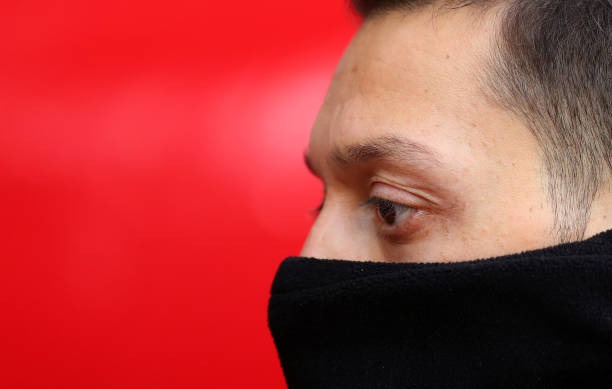
Since the summer that concluded in that Mesut Ozil moment, Arsenal have spent £378m on transfer fees. While these outgoings pale in into insignificance compared with the two Manchester clubs, and are still behind Chelsea and Liverpool, no-one can accuse the club hierarchy of not investing in the squad. The real issue has been that said money has not been spent with any coherent squad building process taking place and, with a few exceptions, with precious few ‘excellent value for money’ signings.
We could argue that we got the best years of Alexis Sanchez’s career, and that Cech, Lacazette, Aubameyang and Xhaka are sort of on-par for the fees paid. Rob Holding appears to be well on the way to proving a real bargain. That’s about it. Indeed the fact that no convincing defensive midfielders were signed during those five years and that we failed to find a real partner for Laurent Koscielny, despite spending nearly £400m, shows what a complete failure of recruitment the club has undergone in that time.
That explains the why the team hasn’t been challenging despite significantly out-spending Spurs.
However, it is only one part of the problem.
Sell, Sell, Sell!
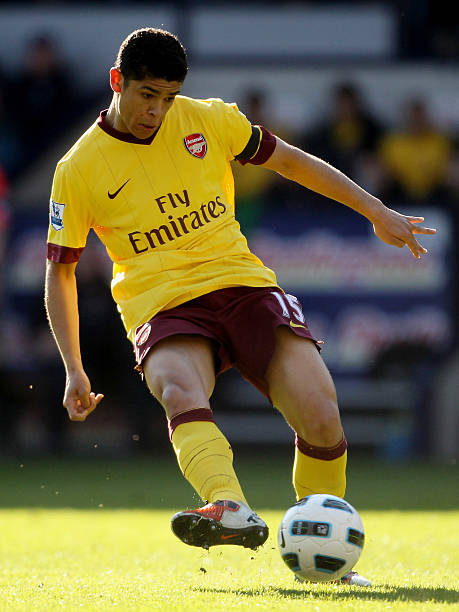
Of greater concern than the mediocre at best incoming transfers, has been the club’s complete inability to get good prices for outgoing players. We are comfortably the worst team in ‘the big six’ at selling assets on the evidence of the last 5 ½ years.
It’s a staggering list of failure when one takes the time to look at it.
During that time the club has parted with Johan Djourou, Denilson, Andrei Arshavin, Andre Santos, Marouane Chamakh, Sebastian Squillaci, Gervinho, Nicklas Bendtner, Lukas Fabianski, Bacary Sagna, Lukas Podolski, Serge Gnabry, Tomas Rosicky, Abou Diaby, Kieran Gibbs, Gabriel Paulista, Wojciech Szczesny, Francis Coquelin, Oliver Giroud, Santi Cazorla, Jack Wilshere, Lucas Perez, Joel Campbell, Mathieu Debuchy, Jeff Reine-Adelaide (who is currently creating chances for fun for the awful strikers who he plays with in Ligue 1) and soon Aaron Ramsey, Petr Cech and Danny Welbeck for a grand total of £77m.
Every single one for a lower fee than we recouped for Thomas Vermaelen who wasn’t even fit to play the previous or following season, or Kolo Toure almost a decade ago.
Apart from those players who came through the Arsenal academy system and Oliver Giroud, that represents a significant financial loss on every one of those players. Given that domestic homegrown players normally have a significant premium on any transfer fees if sold to other EPL clubs, having nine in that list leave for nothing or far below market value shows a spectacular failure of asset management.
Add in having to effectively sacrifice an £80m transfer fee on Alexis Sanchez, and a plethora of those outside the first team squad leaving for peanuts, and the big picture is ugly. There is no doubt that the club has thrown away between £150-250m in transfer fees through mismanagement in that time period.
What makes it worse is seeing what our Premier League rivals are recouping in sales for significantly inferior players. Liverpool have just recouped what could become £19m for Dominic Solanke, a £15m profit for a player with one goal in English football and way down the pecking order. Equally, two weeks after we sold Gabriel for £10m to Valencia, Spurs recouped £20m from Stoke for Kevin Wimmer, who promptly got relegated. Man City got almost the same for Angus Gunn, without a single top-flight appearance to his name, as Arsenal recouped for Szczesny, a guy with 40 caps, nearly 300 top flight and European appearances (for Arsenal, Roma and Juventus), who has seamlessly replaced one of the best goalkeepers of the past 30 years.
Part of the issue is the failure to be decisive about players with contracts winding down, leaving the club repeatedly in a situation of players having control of their destiny at the expense of the club. It’s as if nothing was learned from the situations with Samir Nasri and Robin van Persie.
The same issue forced our hand in letting Alex Oxlade-Chamberlain leave, albeit for nearly £40m. Combined with previous transfers we’ve gone from having the largest number of home-grown players (as far as the rules go) in the top 6, to having the fewest alongside Man City, which could yet force our hands in uncomfortable ways in the seasons to come, looking at impending departures.
Part of the indecisiveness with contracts has been hubris. Having been forced to sell Nasri and van Persie to rivals all those years ago, the club and its leadership were determined to not be kow-towed into doing so again where possible. This is acceptable when you are consistently challenging for major honours or have the financial muscle to allow players to leave for free, but not when you are in Arsenal’s situation.
Refusing to sell players at the peak of their value, or when it has become clear that they aren’t going to renew their contracts on terms acceptable to the club has been a disaster, and one born of a totally unrealistic stance. Arsenal are not on the same footing as Man Utd, Man City, Real Madrid, Barcelona, PSG or Bayern Munich, and simply cannot afford to waste asset value as they have done in recent years.
The net result of doing so has seriously handcuffed the new manager and recruitment team in terms of what they can do in order to refresh this squad whilst keeping us in running for Champions League football, both in terms of spending money in the kitty and the ‘own revenue’ element of STCC.
Salary Straightjacket
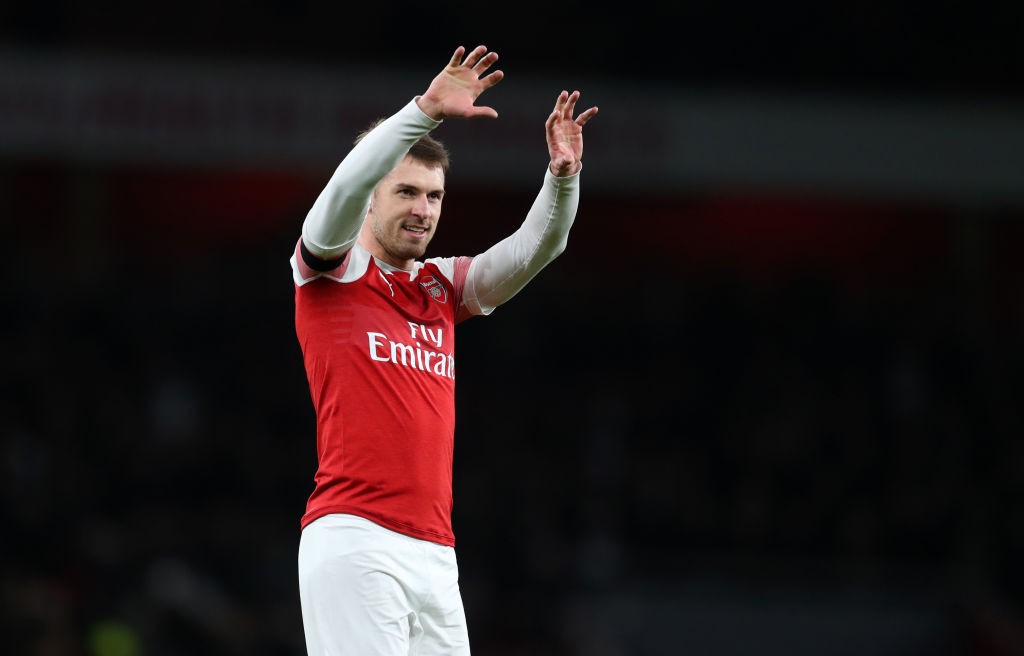
The other issue that has seriously limited Arsenal’s ability to offload players for market value (or in some cases, at all) has been our high wages.
For a long time this was the result of Arsene Wenger’s pseudo-socialist wage structure, where the gaps between tiers of players pay packets was kept to a minimum. While this has some logic for internal harmony, it does mean that the likes of Jenkinson and Ospina won’t move on unless the transfer fee takes a hit in order for the buying club to afford the wages.
The broader practical implications of this aren’t so big if your top earners are happy to be paid amounts that fit into that structure, as if they buy into it, it keeps their wages lower.
However, as we know, football has changed and wages have exploded, especially for higher-profile players. Accordingly, so has Arsenal’s wage bill for playing staff, while still being saddled with those long-contract, high earning fringe players of the Wenger harmonious utopia.
In the pursuit of remaining competitive, Arsenal haven’t just splashed out on transfer fees. Buying more established players means higher wage demands, and when you are no longer guaranteed Champions League participants, those demands get higher still. Does anyone believe that Aubameyang wouldn’t have been willing to take a slightly smaller wage packet had Real Madrid been the ones paying it? Add to that, the desperation to keep players when other high profile stars have left, and you end up with the perfect situation for Theo Walcott’s £140k p/w salary or the £350k p/w (that’s £18m a year) Arsenal felt compelled to agree to give Mesut Ozil after it became clear Alexis Sanchez was hankering for either side of Manchester.
The worst thing about the Ozil contract is that it wasn’t done for footballing reasons, despite his qualities as a player. It was done to save face. Having backed themselves into a position where one star player was going to a rival for a fraction of his value, to lose their only other global star on a free would look like terrible weakness. It would have destroyed any lingering confidence the fans had in the club, its management and executives at what was already a fractious time with revolution firmly in the air.
We’ll never know if it was a parting vanity for the manager, a reputation protector for the CEO or a dictat from the removed parties on high, but either way, making a £60m commitment to a player approaching his thirties when you know a new manager is coming in sooner rather than later is a risk. And one the club is on the hook for after both Wenger and Gazidis have left.
The desire to wrest some control over the club’s inflated wage bill has already forced the club to part with popular high earners for reduced fees when it became clear they weren’t in Wenger’s long-term plans. This may have ultimately cost the club in the long run, as despite the benefit of getting Giroud and Walcott off the wage bill, one can’t help thinking that having both as options on the bench when totally dominating against 10-man Atletico Madrid in the Europa League semi-final might have significantly impacted on the result, our chances of making the Champions League for 2018/19 and our medium-term financial well-being. Again perhaps penny wise, pound foolish.
Even recent attempts to reduce the wage bill to give us greater flexibility have been undermined by subsequent actions. Last season we offloaded Walcott, Sanchez, Giroud, Oxlade-Chamberlain, Szczesny, Gabriel, Debuchy, Gibbs and Coqeulin. That’s about £700k p/w, as well as whatever was covered by the loans of Lucas Perez, Joel Campbell and Carl Jenkinson (probably another £140k p/w+).
So far, so good, in terms of wage reduction.
But this was done away with, initially in part by the high wage Bosman signing of Kolasinac, and long-needed boost of quality of up front in Lacazette. Some of the above departures were forced to meet the wage demands of Aubameyang, though the return has justified it. In addition, however, prior errors were compounded, as rather than the wage flexibility and likely £130m we could have recouped had we sold Sanchez and Ozil when they didn’t sign on the dotted line in time, we first swapped Sanchez for the then higher earning Mkhitaryan, and more than doubled Ozil’s manageable £140k p/w salary to £350k p/w.
So that’s 11 players out – not including Jenkinson who is still here (all experienced internationals) and 5 in for a break even in transfer fees and an increase in wage expenditure of about £100k p/w. That’s about ¾ of a season’s STCC wage increase flexibility for 6 fewer players in the squad.
This summer saw a further number of high earners depart (Mertesacker, Cazorla, Wilshere, Lucas Perez), but in all likelihood, their wages were all consumed by the summer arrivals and contract extensions for Iwobi, Xhaka etc.
So as well as a total lack of transfer revenue putting the mockers on our transfer kitty and undermining our ‘own revenue’ under STCC, the mismanagement of our wage bill means that there is only one other possible route to prevent the club being gridlocked by the Premier League salary cap rules.
Non-Football Money

Beyond prize money, match day income and player sales, there is one other way to boost your possible wage pot via the ‘own revenue’ route. That is commercial and sponsorship deals.
Sadly, this is another area where Ivan Gazidis tenure as CEO was a failure. While commercial revenues are fundamentally linked to on the pitch performance, other clubs have done a better job of growing their commercial profits without necessarily achieving more success. In 2016/17 commercial profits only increased by £10.7m, despite a record 13th FA Cup final victory. That limited Arsenal’s annual wage increase to about £17m, which gets you Mkhitaryan and Welbeck for a year.
Commercial profits (not to mention match day income, prize money and TV money) have also taken a major hit due to not qualifying for the Champions League.
What to do, what to do, what to do? The outlook was decidedly blue…
It’s pretty clear that as a club Arsenal have limited scope for player investment to renew the squad, not just in terms of cash to flash, but to a greater degree by the wage cap enforced by Premier League STCC regulations.
Short of relying solely on Unai Emery getting this team into the Champions League without qualifying rounds as regularly as Wenger a decade ago, Arsenal’s immediate priority has to get their house in order in terms of managing the costs of the wage bill.
For those looking for an explanation of why the club withdrew its contract offer to Aaron Ramsey, it is the first sign of the new regime trying to prioritise where its money is spent. There are plenty of rumours that Ramsey’s agent was trying to play Ozil-esque hardball with the club (not to mention touting his client’s services around while an offer was thought by the club to be agreed), and Rahul and Vinai, unlike Ivan, refused to blink.
As well as not committing vast wages to another player who isn’t likely to be a nailed on first choice in Emery’s preferred set-up, it also sends out a broader message that the days of the creeping Arsenal gravy train for wages, have come to an end.
It seems this will apply in all cases where players prevaricate over contracts to maximise their earnings. Raul Sanllehi is now making the big football decisions and the Spaniard has already made it clear that the club can’t continue to make the same mistakes.
“I do believe that a player’s contract should never go to the last year, as a policy,” said Sanllehi.
“Normally, the contracts of the players are for five years. You need to have a clear idea of what you want to do with that player when he is in the third year, at the latest.”
We don’t yet know if he will, unlike his predecessor, walk the walk as well as he talks the talk, but he’s certainly making the right noises on this issue. The contracts expiring this summer, although they represent asset wastage as already mentioned, give the club a little wiggle room. Ramsey’s departure has already been confirmed, and it’s hard to see Danny Welbeck being offered a new contract that he would accept given his third serious injury in five seasons. Likewise with Carl Jenkinson and David Ospina, given the club’s attempts to rid themselves of both in recent transfer windows. It’s also hard to see Petr Cech come back to continue warming the bench for a significant pay cut. That already frees over £400k p/w for players who, apart from Ramsey, will have not contributed greatly this season.
There is a little respite on the horizon offered by the upcoming change in kit manufacturer, with Adidas taking over from Puma adding £20m to our annual commercial revenue. We should also see significant increases in our sleeve sponsorship revenue.
There is also the issue of player sales.
Arsenal have far fewer expendable saleable assets on their books than in recent seasons, but equally have got on with contract renewals for all those they see having a long-term future at the club. So any players departing should command a reasonable fee, particularly as we have trimmed off any fat from the squad (bar the parting Ospina and Jenkinson, and possibly Elneny) in recent seasons.
The question mark is also the fluorescent elephant in the room, Mesut Ozil. Does or can he fit into the manager’s plans going forward? His talent isn’t in doubt, but his suitability is. His departure would not only free up a serious chunk of the wage bill, but would also presumably generate some sort of transfer fee. The player, through his agent, has made it clear he won’t be ushered out easily, so it’s incumbent on the manager to find a way to utilise him well enough to either get him performing sufficiently to be a long-term first-teamer, or to protect his value for a sale to an attractive destination in the summer.
Longer term, the club needs to re-position its ego from trying to live like the Bayern Munich model boasted of by Ivan Gazidis, and continue the transition to being rather more like Borussia Dortmund started by hiring diamond eyed Sven. We have to be more imaginative with our signings than in recent years, and return to the model of ‘making’ players rather than buying them. Guendouzi and Torriera are certainly a good start, and the progress of academy graduates like Nelson, Willock, Nketiah, Smith Rowe and Saka will and must be prioritised, as much for our home-grown quota as anything else.
It also makes the approach of pursuing loan signings (either as stop gaps or ‘try before you buy’ options) eminently sensible. It also means older squad players like Sokratis or even Lichsteiner are likely to be the order of the day for the short to medium term.
We have to be honest enough with ourselves to admit that when it comes to the absolute top table of European football, we ARE a selling club, for the right price. As I said before, we are not going to be able to compete financially with PSG, the Manchester clubs, Chelsea, Real Madrid, Barcelona, Bayern or Juventus in the transfer market in the next few years. Even though ‘project youth’ was part financial stop-gap/part Wenger vanity project, it has to be a model for part of our future operation. If that identification and focus on young talent can be augmented by smart signings of impactful senior players, we can find a sustainable model that should allow us to only be a selling club when it comes to those players we feel comfortable with selling. After all, selling Coutinho seems not to have done Liverpool any harm.
The key thing is, turning things around will require a cultural and strategic shift at the club from the modus operandi of recent seasons, and cannot be done overnight – even if we suddenly gained a Brewster’s Billions oil magnate. Liverpool, Atletico, the title-winning Monaco side and particularly Dortmund and Spurs show that it can be done, but will require patience with both the head coach and the club’s senior management.
We all wanted change, and the change has come, but its effects cannot be immediate.
We can only hope that the last 4-5 years worth of chronic managerial and strategic mistakes don’t take as long to overcome.
